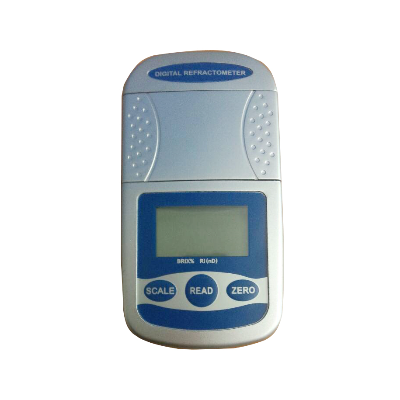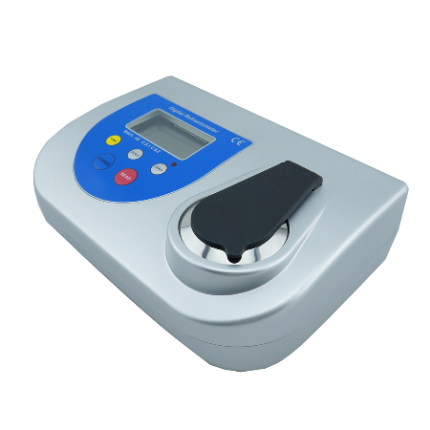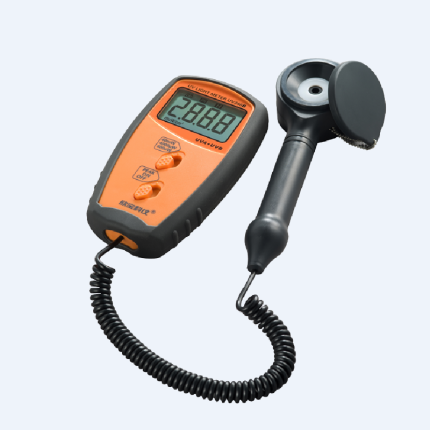Description
Overview
The GAOTek Salinity Refractometer (High Precision, Auto Shut Off) is an optical refractometer which measure brix concentration, salinity, refractive index and other parameters. These parameters are always needed in the lab or our life. This device has a digital readout and LCD display which eliminates uncertainties and is more convenient to use. Just about 0.3 ml-0.5 ml of the sample is needed. This pocket type digital refractometer has a smart shape, offers more accurate testing and works within a temperature range of 32 °F to 104 °F (0 °C to 40 °C). It features a high precision of temperature measurement (2 °F) and an automatic shut off function after 3 minutes.
Features
- Automatic Temperature Compensation
- Works within a temperature range of 32 °F to 104 °F (0 °C to 40 °C)
- Automatic Shut Off after 3 minutes
- Precision of temperature measurement
- Provides instantaneous reading
- Stainless steel sample plate
- Ease of conversion between Centigrade and Fahrenheit Degree
- Alarm of low voltage and low power consumption
- Digital Readout and LCD display
Technical Specifications
| Temperature Measurement Range | 32 °F – 104 °F (0 °C – 40 °C) |
| Precision of Measurement temperature | 2 °F (± 0.1 °C) |
| Measurement temperature Resolution | 2 °F (0.1 °C) |
| Operation Temperature | 32 °F-104 °F (0 °C–40 °C) |
| Storage temperature | 14 °F-122 °F (-10 °C-50 °C) |
| Power Supply | 1.5 v AAA+ |
| Operating Time | More than 1500 times per battery |
| Dimension | 4.72 in x 2.32 in x 1.57 in (119.88 mm x 58.92 mm x 39.88 mm) |
| Weight | 0.353 lbs (160 g) |
Additional Information
Operation
| Keys | Functions | Remarks |
| ON/ OFF Key | Powers the instrument on and off. | Auto-off shuts down the instrument after 3 minutes of non-use. |
| READ Key | Measurements: Apply approximately 0.3 -0.5 ml of sample to the prism surface. Press the READ key. Within 1 second, the value is shown on the LCD display. | For the best results, gently clean and wipe the prism with distilled water and tissue paper. |
| ZERO Key | Zero-Check: Pressing Zero key quickly to perform Zero-Check function. Displays the nD value of the solution.
Calibration: Pressing Zero key to perform a zero calibration. To eliminate accidental calibrations, the key must be pressed for 3 seconds and make sure the solution on the prism must be distilled water. |
Displays the nD value of the solution. |
| TEMP Key | Press this key to transfer between °F and °C | |
| SCALE Key | Active Scale: The scales can be switched between Brix, Refractive Index, and other scales by press the Scales Key until the desired scale is shown by the scale indicator at the bottom section of the LCD display. |
Calibration
- Calibration should be performed on a daily basis for optimum results and accuracy. For the best results, perform calibration in a controlled environment of 68 °F (20 °C) using distilled water of the same temperature. It’s recommended to allow the instrument and the distilled water to reach temperature equilibrium with the controlled environment before calibration takes place.
- Apply approximately 0.3 ml – 0.5 ml of distilled water to the prism surface, press the ZERO key for 3 seconds. When calibration is completed, “CAL” will be shown on the LCD display. To check the nD value of the zero setting for the distilled water, press the ZERO key, quickly, once. This data can be viewed at any time to show the last calibration value.
- When calibration is completed, gently wipe the prism using tissue paper.
Automatic Temperature Compensation (ATC)
Automatic-temperature-compensation ensures that the concentration reading of aqueous (water-based) solution will be accurate with respect to the sample’s temperature. This digital refractometer is able to automatically correct for differences in the temperature of the sample to a reference temperature, usually 68 °F (20 °C). It is well known that substantially all materials expend when heated (become less dense) and contract when cooled (become more dense). The speed of light in a liquid increases with temperature and the refractive index therefore decreases. Although this thermal effect is small for solids, the change in density for liquids is substantial. For example, the reading for a sucrose solution will change by approximately 0.5 % Brix for each 10 °F (5 °C) change in temperature. So a 10 % Brix solution read at 42 °F (108 °C) would read 8 Brix on a non-temperature compensated instrument.
Many hand-held refractometers are not temperature compensated and require the user to manually take temperature measurements and apply a correction. Other hand-held refractometers offer only rudimentary compensation in the range of 18 °F (65 °C) to 35 °F (95 °C). This digital refractometer can automatically compensate for temperature differences within the range 10 °F to 104 °F (5 °C to 40 °C). For the most accurate possible readings the instrument, the ambient temperature and the fluid should be in equilibrium within this temperature range. When testing a sample with a temperature that deviates a great deal from the temperature of the instrument. It may be necessary to put the instrument and the fluid in the same environment for some time. A good rule is to wait approximately 30 minutes for each 10 °F (5 °C) difference in temperature in order to conduct measurement after keeping the instrument, fluid to be tested and environment in the same temperature.
Model: GT00XN00ZS
| Scales | Range | Divisions | Accuracy |
| Salinity | 0-28 % | 0.1 % | ±0.2 % |
| Refractive Index | 1.3330-1.3900 | 0.0001 | ±0.0003 |



